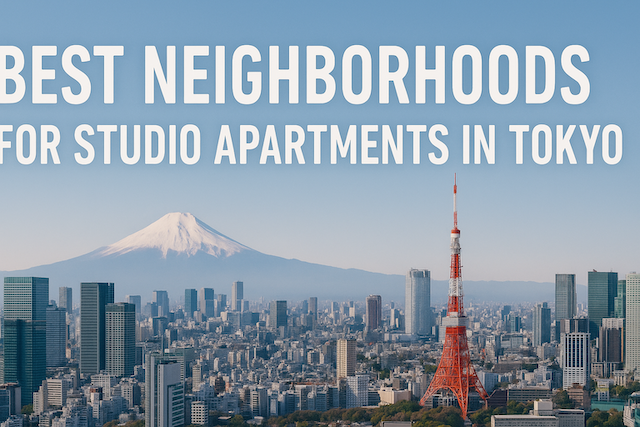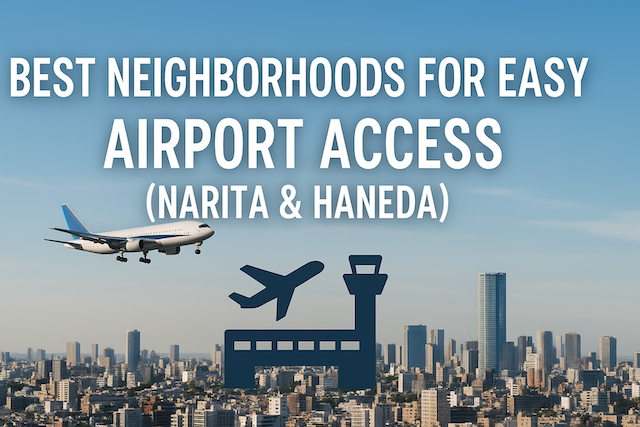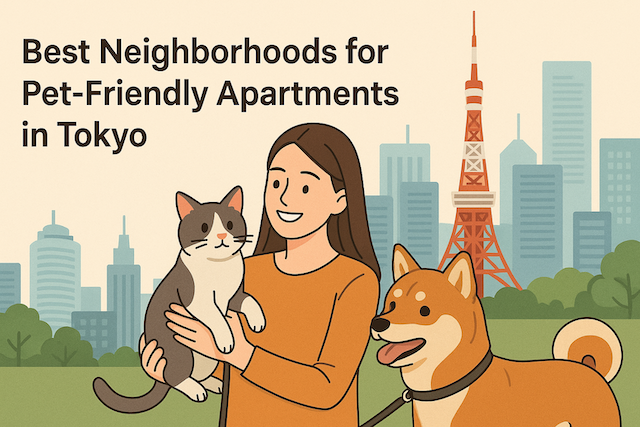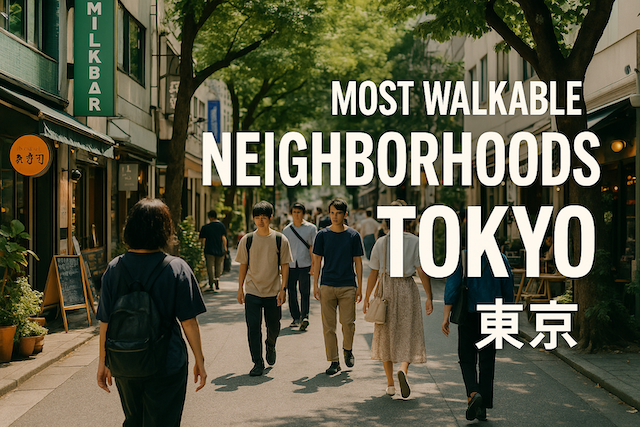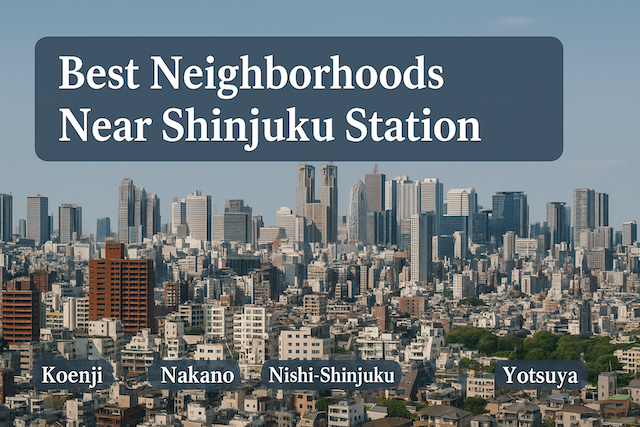Safest Neighborhoods in Tokyo
Tokyo is one of the safest major cities in the world, with low crime rates, efficient law enforcement, and a strong community culture that values order and respect. Yet, for newcomers, expats, and families considering relocation, safety still ranks among the top priorities when choosing where to live. While nearly all areas in Tokyo are considered secure, some neighborhoods stand out for their exceptional reputation, family-friendly atmosphere, and peace of mind.
In this guide, we’ll explore the safest neighborhoods in Tokyo, based on crime statistics, local infrastructure, community environment, and lifestyle quality. Whether you’re looking for a quiet suburb or a vibrant yet safe central district, this list will help you make an informed choice.
1. Meguro: Peaceful, Green, and Refined
Meguro Ward offers a balanced mix of city convenience and suburban tranquility. It’s known for its low crime rate, well-maintained streets, and high concentration of families and professionals.
-
Why it’s safe: Meguro benefits from strong community policing and active neighborhood watch programs. Streets are well-lit and public cameras are common, contributing to an overall sense of security.
-
Vibe: Calm and elegant, with leafy streets, cozy cafes, and boutique stores.
-
Highlights: Meguro River (famous for cherry blossoms), Institute for Nature Study, and easy access to Shibuya, Ebisu, and Roppongi.
It’s especially popular among expat families and diplomats who appreciate both the serenity and accessibility to central Tokyo.
2. Setagaya: Family-Friendly Suburbia
Setagaya is Tokyo’s largest ward by population, but it’s also one of the most peaceful residential areas. Known for its abundance of parks, reputable schools, and community-oriented lifestyle, it attracts many families and long-term residents.
-
Why it’s safe: The ward’s residential zoning minimizes nightlife-related disturbances. Police stations and koban (local police boxes) are frequent, and the community is tight-knit.
-
Vibe: Quiet, suburban, and green — perfect for raising children.
-
Highlights: Komazawa Olympic Park, Shimokitazawa (trendy but mellow), and Sangenjaya’s cozy charm.
Despite being outside the city center, Setagaya’s transport links — such as the Den-en-Toshi and Odakyu lines — make commuting convenient.
3. Bunkyo: Education and Tradition
Bunkyo Ward is sometimes called “the brain of Tokyo” due to its cluster of universities, schools, and libraries. The area’s intellectual and historical atmosphere gives it a refined, low-crime character.
-
Why it’s safe: Bunkyo has one of the lowest crime rates among Tokyo’s 23 wards. It’s a conservative, education-focused area with minimal nightlife.
-
Vibe: Academic, peaceful, and cultured.
-
Highlights: Tokyo Dome City, Koishikawa Botanical Garden, and historic temples.
Families and retirees appreciate Bunkyo’s calm streets and proximity to medical facilities like the University of Tokyo Hospital.
4. Kichijoji (Musashino City): Suburban Safety Meets Lifestyle
Technically part of Musashino City in western Tokyo, Kichijoji consistently ranks as one of the most desirable places to live in Japan. It combines urban sophistication with suburban comfort, offering both safety and entertainment.
-
Why it’s safe: Low crime rates, strong local community presence, and well-patrolled streets.
-
Vibe: Youthful yet secure — lively shopping streets coexist with quiet residential lanes.
-
Highlights: Inokashira Park, Ghibli Museum, and Kichijoji Sun Road shopping arcade.
This area is ideal for young professionals and families who want peace without sacrificing fun and convenience.
5. Minato: International and Secure
Home to embassies, multinational offices, and high-end apartments, Minato Ward is one of Tokyo’s most cosmopolitan — and safest — districts. With many foreign residents and international schools, safety standards are exceptionally high.
-
Why it’s safe: A large number of embassies means heavy police presence and strict security protocols. Residential zones are well-guarded and equipped with surveillance systems.
-
Vibe: Prestigious and urban.
-
Highlights: Roppongi Hills, Azabu-Juban, and Aoyama.
Minato’s neighborhoods vary in tone: while Roppongi is more nightlife-oriented, areas like Hiroo and Azabu are quiet, upscale, and family-friendly.
6. Nakameguro: Trendy but Calm
Nakameguro, located between Meguro and Shibuya, is one of Tokyo’s most stylish neighborhoods — yet it retains a relaxed, low-crime atmosphere.
-
Why it’s safe: Small, community-driven, and largely residential. The area’s gentrification brought in boutique cafes and design stores, replacing older, less monitored zones.
-
Vibe: Creative and chic, but never chaotic.
-
Highlights: Meguro River promenade, artisanal cafes, and boutique shops.
Nakameguro is ideal for singles and couples who want a central yet peaceful location.
7. Akasaka: Secure Business District
Akasaka is known as a business and government hub, surrounded by luxury hotels and corporate offices. Its proximity to political centers ensures a visible police presence and heightened surveillance.
-
Why it’s safe: Near Japan’s National Diet and government ministries. Street cameras are everywhere, and patrols are frequent.
-
Vibe: Professional, elegant, and quiet after dark.
-
Highlights: Akasaka Sacas, Hie Shrine, and top-tier restaurants.
While not a residential hot spot compared to Setagaya or Meguro, Akasaka appeals to professionals and executives seeking a secure and convenient base.
8. Daikanyama: Luxury and Low Risk
Daikanyama, adjacent to Shibuya, offers exclusive residential living in a boutique-style environment. Despite being near one of Tokyo’s busiest areas, it’s remarkably quiet and safe.
-
Why it’s safe: Low-rise luxury residences, gated apartments, and a limited nightlife scene.
-
Vibe: Stylish, international, and calm.
-
Highlights: Daikanyama T-Site (Tsutaya bookstore), Hillside Terrace, and upscale cafes.
Security-conscious expats often choose Daikanyama for its combination of privacy, beauty, and walkable urban design.
9. Jiyugaoka: Relaxed and Secure Lifestyle
Jiyugaoka, located in southern Meguro and Ota wards, is often called the “Beverly Hills of Tokyo.” It’s famous for its European-style streets and peaceful, upscale ambiance.
-
Why it’s safe: Low crime rate, friendly local community, and many family-owned shops that foster trust.
-
Vibe: Feminine, elegant, and relaxed.
-
Highlights: Jiyugaoka Sweets Forest, boutique cafes, and luxury salons.
It’s especially popular among women living alone, thanks to its safety and comfortable living environment.
10. Aoyama: Upscale and Orderly
Aoyama, part of Minato Ward, combines luxury living with strict urban order. It’s lined with designer stores, art galleries, and international offices, all within an atmosphere of discretion and calm.
-
Why it’s safe: High-end demographics and constant patrolling. Minimal nightlife chaos compared to neighboring Shibuya.
-
Vibe: Modern, elegant, and minimalist.
-
Highlights: Omotesando Avenue, Nezu Museum, and chic dining spots.
While rent prices are among the highest in Tokyo, residents value the peace and security that come with it.
11. Toyosu and Kachidoki: New, Planned, and Safe
These redeveloped bayside areas are designed with safety and convenience in mind. Toyosu and Kachidoki, both in central Tokyo, feature modern residential towers, security systems, and organized community facilities.
-
Why they’re safe: Controlled environments, 24-hour building security, and low street crime.
-
Vibe: Clean, modern, and family-oriented.
-
Highlights: Toyosu Market, Lalaport Toyosu, and access to waterfront parks.
These neighborhoods are favorites among young families and professionals seeking modern living close to Tokyo’s business centers.
12. Mitaka: Calm and Community-Focused
Located just west of central Tokyo, Mitaka offers a serene suburban lifestyle with strong community bonds and low crime.
-
Why it’s safe: Quiet residential zoning, cooperative neighborhood culture, and few nightlife spots.
-
Vibe: Green, local, and family-centered.
-
Highlights: Ghibli Museum, Inokashira Park (shared with Kichijoji), and cozy shopping streets.
Mitaka is perfect for those who prioritize safety, space, and a slower pace of life — all while remaining within commuting distance of central Tokyo.
How to Evaluate Safety in Tokyo Neighborhoods
While nearly every Tokyo district is safe compared to global standards, it’s still wise to evaluate:
-
Police Presence: Areas with nearby koban stations provide immediate support and visible deterrence.
-
Nightlife Density: Districts with fewer bars and clubs typically experience fewer disturbances.
-
Lighting and Infrastructure: Well-lit streets and visible surveillance cameras enhance safety.
-
Community Engagement: Neighborhood associations and active local events create social accountability.
-
Building Security: Newer apartment complexes often include 24-hour monitoring, secure entry, and intercom systems.
Final Thoughts
Tokyo offers a remarkable level of safety, even in its busiest commercial districts. However, for those prioritizing peace, family comfort, and a stress-free environment, areas like Setagaya, Meguro, and Bunkyo stand out as top choices. For expats seeking both international accessibility and security, Minato, Daikanyama, and Aoyama are unbeatable.
Whether you prefer the modern towers of Toyosu or the leafy calm of Kichijoji, each of these neighborhoods reflects Tokyo’s unique ability to combine urban sophistication with genuine peace of mind.
FAQs
What are idioms and how are they different from other expressions?
Idioms are fixed phrases whose meanings are not obvious from the individual words (e.g., “hit the books” means “study hard,” not literally hitting books). Expressions can include common, often literal phrases such as “That makes sense” or “How’s it going?” In class, both help you sound natural, but idioms require contextual learning because their meanings are figurative.
Why should I use idioms in class?
Using idioms boosts naturalness, cultural understanding, and listening comprehension. You will understand teachers, videos, and classmates better, and your speech will sound more fluent. Idioms also build confidence: using them correctly shows you are moving beyond textbook English into real-life communication.
How can I learn idioms effectively without memorizing lists?
Learn idioms in context. Save each idiom with a full sentence, situation, and short story. Group them by theme (time, emotions, study, teamwork) and review in small sets. Make personal connections: write a one-sentence memory (“I burned the midnight oil before my math test.”). Spaced repetition—reviewing over multiple days—helps retention.
How do I know when an idiom is appropriate?
Consider tone (formal vs. informal), audience (teacher vs. friends), and purpose (presentation vs. chat). For example, “in a nutshell” can work in semi-formal presentations, while “hang in there” is casual encouragement. If you would not use slang in a graded speech, limit casual idioms and choose neutral expressions.
What are some classroom-friendly idioms I can start with?
Try these common choices:
- Hit the books — study hard
- Break the ice — start a friendly conversation
- In the same boat — in a similar situation
- Go the extra mile — make extra effort
- Pass with flying colors — succeed with high marks
- In a nutshell — in summary
How can I practice idioms in online classes?
Use small, repeatable routines:
- Idiom of the day: Post one sentence with the idiom in the chat.
- Role-plays: Include one target idiom per role-play.
- Reflection: After class, write two lines using today’s idiom about what you learned.
- Voice notes: Record a 30-second summary using one idiom and share for feedback.
How many idioms should I use in a single answer or essay?
Quality over quantity. One or two well-chosen idioms per paragraph (or per minute of speaking) is enough. Overuse can distract or feel forced. Your goal is clarity first, flavor second.
How do I avoid common mistakes with idioms?
Understand meaning and register before using an idiom. Do not mix idioms (“hit the ice” is not a blend of “hit the books” and “break the ice”). Avoid literal translations from your first language. When unsure, check a learner’s dictionary for usage notes and example sentences.
What is the best way to remember idioms long term?
Create an Idiom Journal with four columns: idiom, meaning, personal example, and context tag (e.g., “deadline,” “teamwork”). Review five entries daily using spaced repetition. Add a quick drawing or emoji to trigger memory. Recycle each idiom in speaking and writing within 48 hours of learning it.
Can I use idioms in formal presentations or academic writing?
Yes, but selectively. Neutral idioms like “in summary” (or “in a nutshell” in semi-formal settings) and “on the other hand” (a discourse marker) are safer. Avoid highly casual idioms (“no pain, no gain”) in research papers unless used for rhetorical effect and properly framed. Always prioritize clarity and audience expectations.
How can teachers encourage idiom use without overwhelming students?
Introduce one idiom per lesson with context, pronunciation, and a short dialogue. Use quick tasks such as “Find-and-Fit” (students choose the best idiom for a scenario) and “Swap-and-Share” (students exchange journals and quiz each other). Provide feedback on accuracy and appropriateness rather than quantity.
How do pronunciation and prosody affect idiom use?
Idioms are often said as chunks with natural stress. Practice shadowing: listen to a short clip, then repeat with matching rhythm. Record yourself and compare stress placement (e.g., pass with FLYing COlors). Clear chunking helps listeners recognize idioms quickly.
What should I do if my classmates do not understand the idiom?
Paraphrase immediately: “It was a piece of cake—very easy.” This maintains flow and ensures comprehension. Over time, you can reduce paraphrasing as your class becomes familiar with the idioms you use.
How can I measure improvement with idioms?
Set weekly micro-goals: “Use three target idioms accurately in discussion,” or “Include two idioms in my reflection.” Track accuracy (correct meaning and context), naturalness (appropriate tone), and retention (reusing after several days). Small, consistent wins build long-term fluency.


![Where to Live in Tokyo for Couples [2025-2026 Guide]](https://tokyorelocationguide.com/wp-content/uploads/2025/10/ChatGPT-Image-Oct-17-2025-04_22_42-PM.png)
